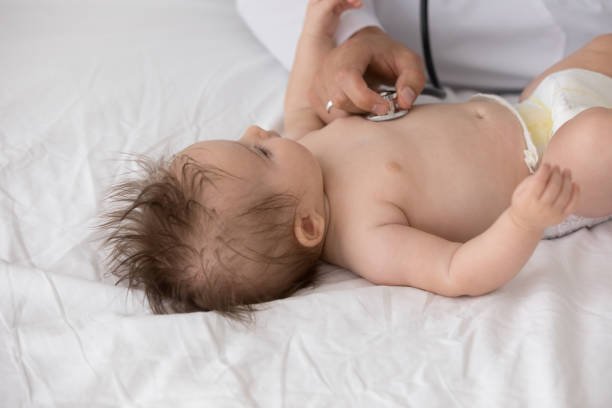
Chest Tightness and Difficult Breathing May be Heart Tumors! If You Have Heart Symptoms, Get Checked Quickly to Avoid Tumors Causing Stroke and Shock.
Heart cancer is quite rare because cancer cell lesions mostly occur on the surface of the body, such as the digestive tract, lungs and other organs that are easily irritated by foreign substances. Moreover, as the blood flow in the heart is fast, cancer cells will flow back out as soon as they enter the heart. However, tumors can develop in the heart and can occur at any age, whether infants, teenagers, or adults.
In this article, we introduce the types of heart tumors, their causes and symptoms, and how to treat them? Does it need to be surgically removed?
Understanding cardiac tumors
Cardiac tumors generally refer to tumors that occur in the right atrium, right ventricle, left atrium, left ventricle, and large blood vessels connected to various parts. Compared with tumors in other organs of the body, cardiac tumors are less common. Most of them are primary benign tumors, and most of them have a good prognosis. However, if it is a rare malignant tumor, it is extremely difficult to treat and the prognosis is poor.
In addition to affecting valve function and leading to heart failure, cardiac tumors may also cause life-threatening consequences due to tumor fragments falling off and blocking the cardiac blood vessel outlet. If tumor fragments are sent to the brain through blood vessels and block the cerebral blood vessels, it will cause a stroke. Therefore, regardless of Regardless of the type of tumor, surgery is usually required.
Cardiac tumors are divided into three categories, with “cardiac myxoma” being the most common
Cardiac tumors can be roughly divided into three categories: primary benign tumors, primary malignant tumors, and metastatic cardiac tumors. They are explained below:
Type 1: Primary benign tumor
In adults, more than half are cardiac myxomas, which tend to occur in middle-aged people and are more common in women. 95% of the occurrence locations are in the atrium, about 75% in the left atrium and 20% in the right atrium. The left and right ventricles each account for about 2.5%. Other benign cardiac tumors include:
- Lipoma
- Hemangioma
- Fibroma
- Hamartoma
- Teratoma
Type 2: Primary malignant tumor
Primary malignant tumors are rare and include:
- Malignant angiosarcoma
- Malignant rhabdomyosarcoma
- Malignant mesothelioma
- Malignant fibrosarcoma
Type 3: Metastatic cardiac tumors
As the name suggests, metastatic cardiac tumors are malignant tumors that metastasize to the heart from other nearby organs. As mentioned in the introduction, the heart is not prone to cancer, so metastatic tumors are also very rare. What happens is mostly caused by malignant tumors in nearby locations such as the bronchus, stomach, esophagus, mediastinum, etc., which metastasize through blood vessels.

Infants and young children also develop tumors. List of primary childhood cardiac tumors
The incidence rate of neonatal cardiac tumors is about 0.002~0.3%. Although most of them are benign, if the growth site compresses the heart or blood vessels, it may cause life danger. Therefore, it is recommended that after the baby is born, parents may consider checking the heart condition through “Newborn Cardiac Ultrasound Screening at Your Own Expenditure” to prevent problems before they occur.

Various types of primary childhood cardiac tumors are introduced as follows:
Benign Tumor
Rhabdomyomas: The incidence rate is 46~80%, usually found within 1 month after birth, and can easily compress the ventricular outlet.
- Myxoma: The incidence rate is 13.6~18%. It is usually discovered after 1 year of age and may cause tumor embolism.
- Fibroids: The incidence rate is 7.8~10%. They are usually found from one month to one year old. The common symptom is arrhythmia.
- Teratomas: The incidence rate is 1.6~2%. They are often found within 1 month after birth and can easily lead to hydropericardium.
- Hemangioma: The incidence rate is 2.3%. It is more often found within 1 month after birth and can easily lead to hydropericardium.
Malignant tumor
- Angiosarcoma: The incidence rate is <0.1%. It is often found between the fetal period and 3 months. It may cause cardiac tamponade and affect cardiac function. In severe cases, surgery and chemotherapy are required.
Symptoms of heart tumors are not obvious. Seek medical attention as soon as possible if you often feel uncomfortable.
The symptoms of various types of cardiac tumors are quite similar to those of other heart diseases, including:
- Palpitations
- Dizziness
- Respiratory asthma
- Chest tightness, chest pain
- Weak and tired
However, the biggest fear of cardiac tumors is that they may become too large and affect the contraction of the heart, leading to sudden death, or they may be blocked by ruptured fragments, causing stroke or shock. Therefore, if you feel heart discomfort, it is recommended that you go to the cardiology department of the hospital to arrange various tests such as cardiac ultrasound and electrocardiogram to find out the actual cause.
The main treatment for cardiac tumors is surgery, which has a high success rate and good postoperative cure.
The main treatment for adult cardiac tumors is surgery, while drugs are responsible for improving heart function and alleviating uncomfortable symptoms. At present, most cardiac tumors can be treated through minimally invasive surgery, which not only has a high success rate, small wounds, and short operation time, but also has good recovery conditions and can return to normal life in a short time. After surgery, patients only need to undergo regular cardiac examinations every year to confirm whether the tumor has recurred again.
If a heart tumor is diagnosed, it is recommended to undergo surgical treatment as soon as possible to prevent the tumor from continuing to grow, which will not only make the operation more difficult, but also increase the risk of stroke or sudden death.












